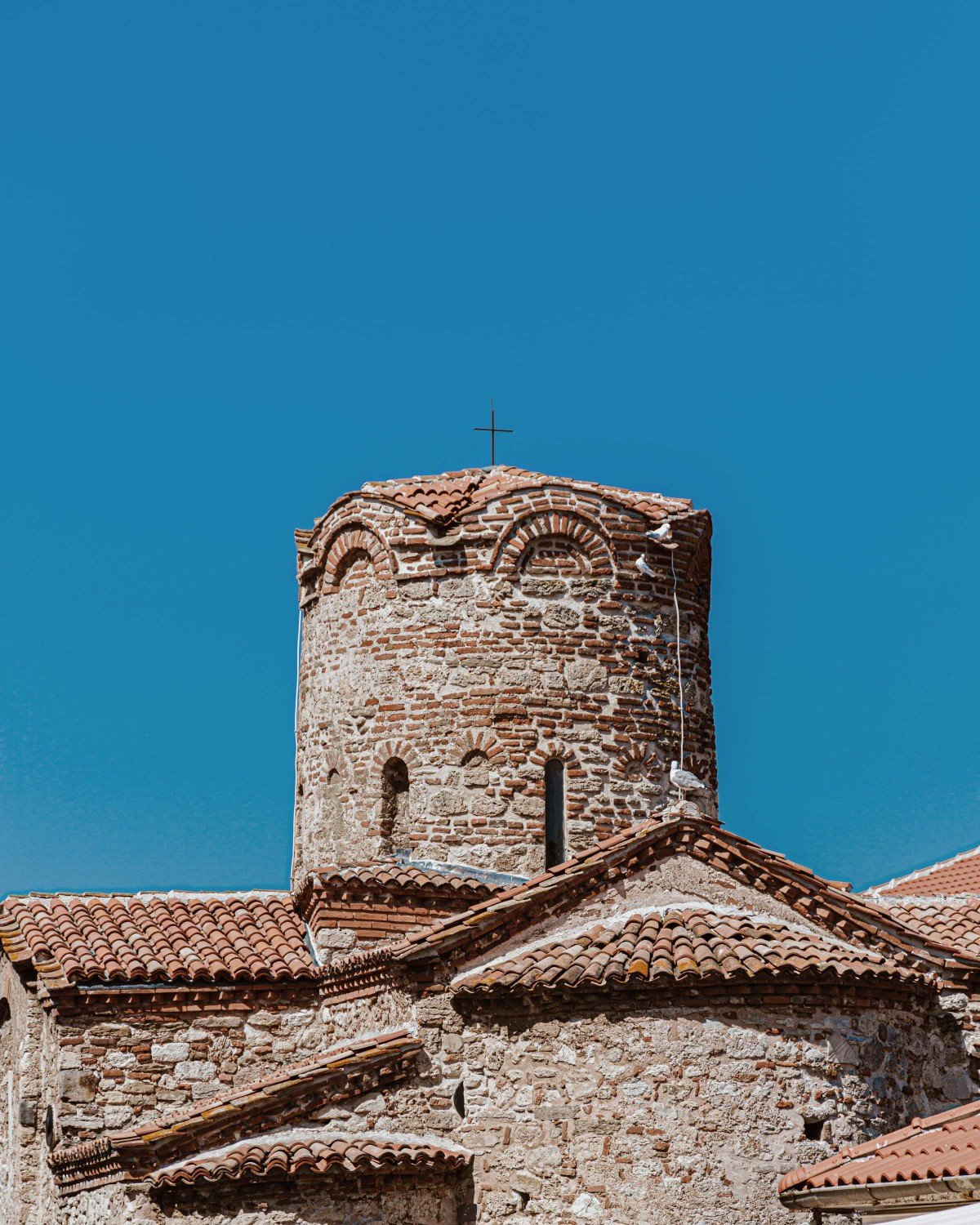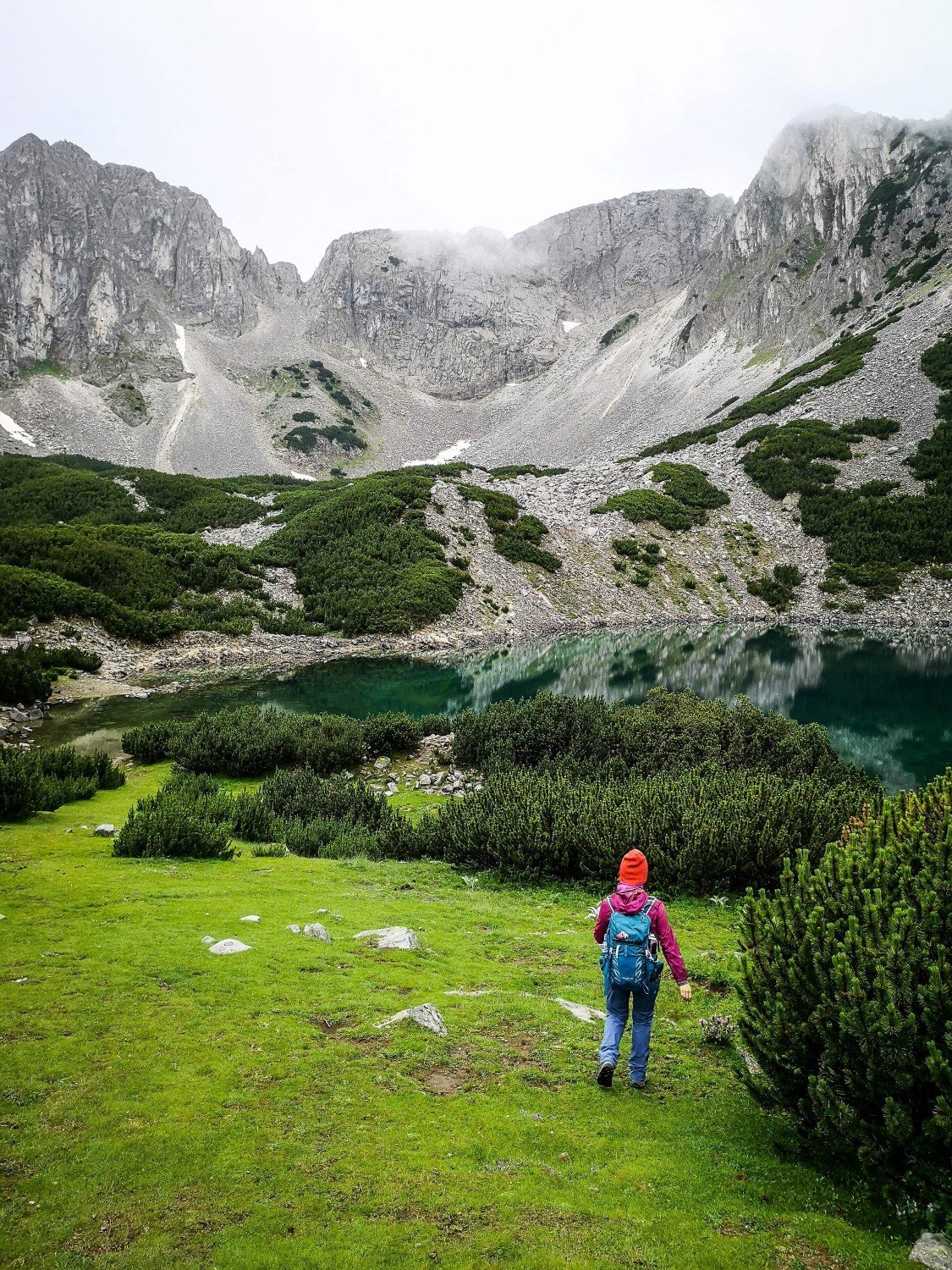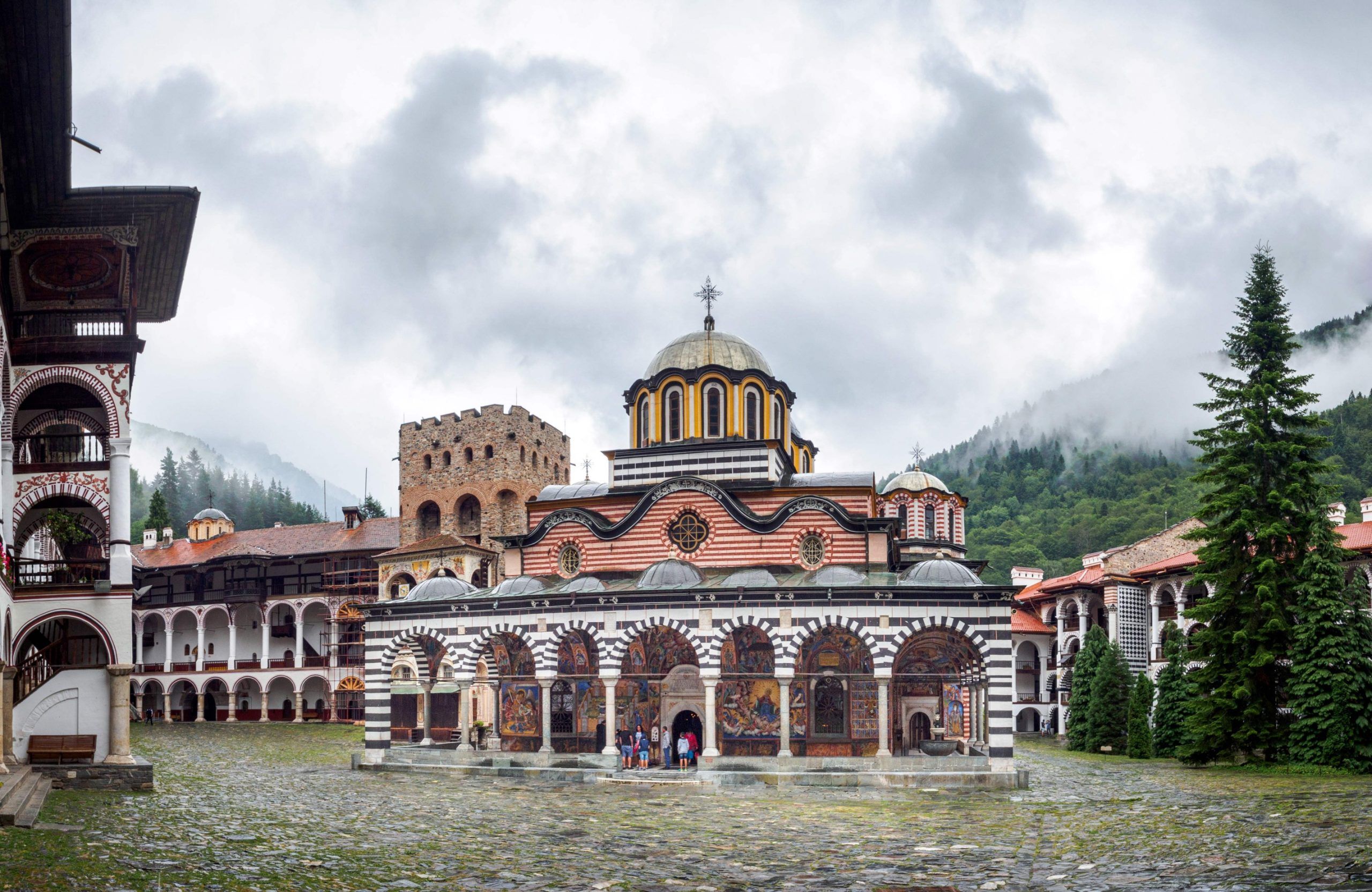The internationally renowned beauty to visit on your next trips
Written by Alex Portarev and Detelina Palova, edited by Lindsay Martin, photos by Damian Kamp, Dimitriy Anikin and Antonia Chekrakchieva (Unsplash).
This beautiful country we call home currently has ten sites inscribed on the World Heritage list. Sixteen more are undergoing the nomination process. The reason why this is important is that being a World Heritage Site means you’re under legal protection by the United Nations Educational, Scientific and Cultural Organization. You know, that organization that you hear about every now and then - UNESCO.
We’ll take a leap into the natural, cultural, and historical with wild forests, masterpieces of creative genius, and the architectural choices of building in the weirdest places. In this article, we will be diving deep into what makes the sites in Bulgaria unique and …“considered to be of outstanding value to humanity”. Big words!
Ancient City of Nessebar
Our first site is the Ancient City of Nessebar. It is located north of Burgas and was inscribed in 1983. 80s kids will remember. Over 3000 years old, it started off as a Thracian settlement, then continued into a 6th-century Greek colony called Menebria, or the more popular Messambria. There, you can witness diverse examples of multicultural heritage. You’ll find Greek Black Sea colony remnants of fortifications, second millennium BC archaeological constructions, a Hellenistic villa, religious buildings from Antiquity, and preserved churches from the Middle Ages. You can even scuba dive and be astonished that significant parts of the ancient town are below sea level. In addition, it offers a glimpse into the architectural style from the Bulgarian Renaissance… not underwater, of course.
Today, Nessebar has a special place in the heart of the Black Sea. It offers diverse heritage, crowded summer nightlife, and a variety of cultural festivals such as the international art festival “Constellations in Nessebar,” and the folklore fest “Nessebar’s jewel.”
You can read more about this site.

Srebarna Nature Reserve
What is far away from Sofia as a destination, but still in Bulgaria? You will find that out if you plan a trip to the fantastic reserve of Srebarna. This natural landmark plays host to some fascinating wildlife.
The village of Srebarna is located in Northeastern Bulgaria, 16 km from the town of Silistra. The reserve itself is a freshwater lake, adjacent to the Danube river, an area extending more than 6 km2. Home to almost 100 bird species, it also couchsurfs 80 species that seek refuge there every winter. The rich assortment of wildlife is the reason for its international significance. Srebarna is famous amongst Bulgarians for its pelicans that are a fan-favorite with kids. Plant species include water lilies, the endangered marsh snowdrop, and interestingly, the insect-eating bladderwort.
The name itself means silver, and holds many stories. One speculates the origin of the Khan Srebrun who died fighting the Pechenegi warriors, another tells a story of a boat filled with silver crashing in the shallow coast of the lake. But we definitely don’t recommend that you show up at the entrance with a shovel. The third one, and the most romantic of all, says the name Srebarna comes from the common sight of the full moon reflecting in the lake during nights which resembles a picturesque painting of melted silver.
You can read more about this site.
Ancient and Primeval Beech Forests of the Carpathians
UNESCO is an international organization so sites can stretch further than the borders of a single country. These forests are shared between more than 12 countries. The European Beech began at the end of the last ice age, and has spread from just a few isolated refuge areas in the Alps, Carpathians, Diarides, Mediterranean, and Pyrenees.
Today, these regions stretch from Belgium and Spain to Bulgaria and Ukraine. The expansion of the tree is related to its adaptability and tolerance of different climates and physical conditions. You might think, “why is the beech tree important for UNESCO?” The answer is that massive beech forests withstood the last ice age and are possibly the biggest evolutionary culprit of why Europe’s nature is so beautiful today. If you’ve ever hiked the beautiful paths of the “Central Balkan” nature reserve, you might have seen them.
You can read more about this site
Boyana Church
Inscribed in 1979, this church is located on the outskirts of Sofia in the Boyana district. It is composed of three buildings. The eastern church was built in the 10th Century and enlarged in the 13th. It holds one of the most important collections of medieval frescoes dating back to 1259. The third church was built at the beginning of the 19th Century. Named after two patron saints, St. Nicholas and St. Panteleimon, the church carries remnants of different fresco schools in different periods.
This monument is astonishing because it is one of the most well-preserved sites of Eastern European medieval art. It’s one of Sofia’s cultural heritage jewels, and although it’s hard to get there, it’s definitely worth it. Put in an hour and half hiking from the church and you can even see another prized heritage in Sofia, the Boyana waterfall. Did we mention the church has working air conditioning?
You can read more about this site
Madara Rider
This famous bass-relief was inscribed in 1979. It is located in the village of Madara, in the Shumen province. This unique artwork was created in the first years of the formation of the Bulgarian state, dating back to the 8th Century. 23 meters high and carved into rock, it illustrates a horseman pointing a spear towards… a lion? An 8th-century artistic reflection of a lion that begs the questions “Did they have lion problems?”.
The village where it is located was a sacred place of the First Bulgarian Empire, before Bulgaria's conversion to Christianity in the 9th Century. Next to the object, inscriptions can be found regarding events that occurred between 705 and 801 AD. It is located between the first two Bulgarian capitals - Pliska and Preslav.
You can read more about this site
Pirin National Park
The Pirin mountains have inspired centuries of art and love for the beauty of nature which makes it integral to Bulgarian culture, almost as much as yogurt. This site spans over 270 km2, with altitudes ranging from 1008 to 2914 m in the Pirin Mountains. This site plays host to waterfalls, forests, glacial lakes, caves, and much more. It was first inscribed in 1983, but an extension was added in 2010, and the covered area now spans 400 km2.
This site is something out of a fairy tale: a mountainous scenery with exceptional beauty, holding more than a thousand vascular plant species. It’s most renowned for its Edelweiss, ski destinations, and 70 glacial lakes including a glacier or two. You can also find rivers, remote meadows and knife-edge ridge, the fan-favorite of which is Koncheto (the Horsey). The name is derived from inexperienced hikers who found the safest way to advance it by saddling down and pushing themselves forward.
So many things to see there, but so little time. That’s why Pirin has a lot of mountain cabins (known as “hizha”) to offer the out-of-office treat you need in the middle of its dreamlike landscape.
So, do you have a busy week in Sofia?
You can read more about this site

Rock-Hewn Churches of Ivanovo
The village of Ivanovo, near Ruse, holds its own secrets carved into stone. The Rusenski Lom River valley offers a complex of churches, chapels, monasteries, and cells carved into rock. Named “St. Archangel Michael,” it was founded by a monk named Joachim who became the third patriarch of Tarnovo. These were the days where Veliko Tarnovo was the capital of the country. Before him, the first hermits dug out their habitats here during the 12th Century.
There are also 13th and 14th Century murals here that testify to the artistic skills of the Tarnovo School artists. Just like the Boyana Church, this site represents several styles over several years and was inscribed in 1971. If asked “What? Did you live in a cave?” the religious residents of this place were probably the only ones who could answer with “Yes. We built it ourselves.”
You can read more about this site
Rila Monastery
Located on the slopes of Rila Mountain, not far from Kyustendil, you can find the next monument on the list, and one of the biggest tourist attractions of Bulgaria (see the cover image). This Monastery was founded in the 10th Century by the later canonized hermit St. John of Rila. Today the revered John of Rila Miracle-Worker (or Ivan Rilski Chudotvorets), a man with a grand story, even caught the eyes of Tsar Petar. Not only that, he also caught the lev and his image is on the 1 lev coin. His habitat became a holy site and was transformed into a monastic complex, which has played an important role in Bulgaria's spiritual and cultural survival. Destroyed by a fire in 1778, it was rebuilt in 1862 and still stands today as a characteristic monument of the Bulgarian Renaissance.
The Rila monastery is a big part of the reason Bulgarians have preserved their culture and language during Ottoman rule because it held onto scripts from 11th to 19th centuries that are still there today. But if you’re not interested in books, then you can always enjoy the amazing mekitsas made outside the monastery, or the delicious Rila trout in the nearby establishments.
You can read more about this site
Thracian Tomb of Kazanlak
This tomb is a part of a vast Thracian necropolis near Seuthopolis. A city named after the capital of the once existing Odyssian kingdom, it was later conquered by the empire of Macedon. The Kazanlak tomb itself was built for one of the Thracian rulers named Roigos who you can see having a chat with his wife on the frescoes. It was discovered in 1944, inscribed in 1979 and, of course, it can be found in the town of Kazanlak, just north of Stara Zagora.
Dating back to the Hellenistic period (end of the 4th Century BC), It offers a glimpse into Bulgaria's best-preserved artistic masterpieces from the Hellenistic period in Thrace. The artwork shows burial rites and cultural reflections of how those buried here lived their life. If you got excited about it, we’re sorry to inform you that you won’t see the original tomb, but you can visit a specially constructed copy of the tomb right across the street. Even someone’s breath can damage frescoes this old!
You can read more about this site
Thracian Tomb of Sveshtari
Another entry, another tomb. In 1982 the Sveshtari tomb was found, but not in Thrace this time. In Razgrad, close to the village of Sveshtari, soft limestone blocks hide sculptures and paintings, a triumph to the dead king. Speculated to be the tomb of Dromichaetes (3rd century BC), it shows structural principles of other Thracian cult buildings. The architectural decor, the ten carved female figures, and the lunette decorations exemplify that but with a twist, it seemed to experts as if some artworks were unfinished. That leads to the belief that the king resting in the tomb perished earlier than scheduled.
The Getae’s culture, hinted in the tomb, was a group of folk within the Odryssians, once inhabiting the regions to either side of the Danube, in what is today Northern Bulgaria and Southern Romania. Today, the monument is part of an archaeological reserve that holds 26 mounds. It was inscribed in 1985.
You can learn more about this site
What does it mean to inscribe a site?
The process of an inscription in the World Heritage list offers prestige, which helps raise awareness amongst citizens and aids historic preservation. It also creates the possibility to apply for funding, which is why these sites deserve even more attention. Places as diverse and unique as the Pyramids of Egypt, the Great Barrier Reef in Australia, Galápagos Islands in Ecuador, the Taj Mahal in India, the Grand Canyon in the USA, and the Acropolis in Greece are examples of the 1007 natural and cultural places inscribed on the World Heritage List.
Learn more about it on the official UNESCO site.
Our next stop: Traditions, folklore, craftsmanship, dances and more on Bulgaria's UNESCO Intangible Heritage.
Source: https://whc.unesco.org
